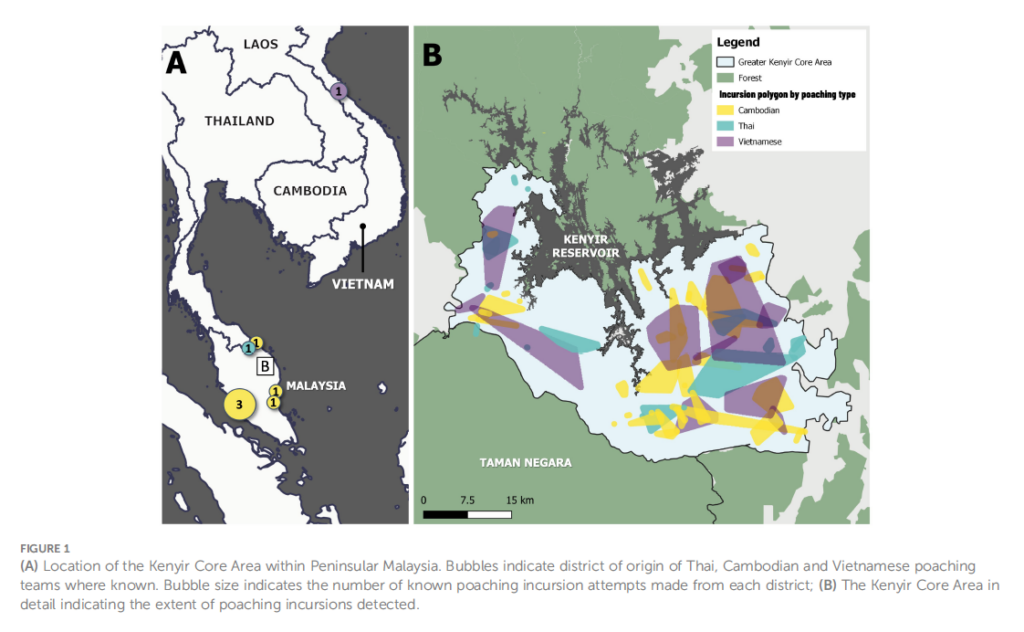Abstract:
Tigers are a conservation-reliant species, as multiple populations face the risk of local extinction due to poaching arising from the continued demand for their body parts. Preventing tiger poaching poses a challenge for the rangers responsible for their protection, particularly in Southeast Asia, where the protected areas are typically large, mountainous tropical forests guarded by small teams of rangers. Improving counter-wildlife crime tactics is hindered without robust evaluations, and inefficient approaches are perpetuated. We evaluate an eight-year project aiming to recover a tiger population in Peninsular Malaysia. Three distinct poaching problems by Vietnamese, Thai, and Cambodian groups, differing by organisation, target species, and tactics, were prioritised, and ranger counter-poaching tactics were tailored to reduce these. Applying a framework developed to evaluate crime prevention known by the acronym EMMIE, here we: (1) examine evidence our intervention was effective in reducing the poaching threat; (2) resolve the Mechanisms by which our intervention caused a reduction in harm from poaching and how intervention effectiveness is Moderated by the three poaching types; (3) define the elements necessary for Implementation and the Economic costs involved. We found poaching incursion frequency fell 40% from baseline years to treatment years across all poaching types while poaching incursion depth declined, with disrupted incursions on average, 2.6 km (Thai) and 9.1 km (Cambodian) closer to the forest edge. However, wire snares increased from baseline to treatment years as Vietnamese poachers increased the number of snares per incursion eightfold. No poaching incursions were observed during the Covid-19 pandemic. Tiger density remained below recovery potential (0.48/100km2 in 2014 to 0.53/ 100 km2 in 2021) but stabilised as key females survived and were detected breeding. Leopard, sun bear, muntjac, and wild boar densities remained stable. Disarming active snares and seizing an increased proportion of snares before being deployed directly reduced the potential risk of mortality to medium-large mammals once a poaching incursion began. Attributing the decline in poaching attempts to our intervention is supported for Cambodian poachers via three plausible mechanisms: increased cost of reoffending by repatriated poaching team leaders; reduction of detailed knowledge sharing and imitation by peers; general deterrence at community level from increased awareness of the elevated risk of arrest and low likelihood of enjoying rewards. We found ranger performance enhancements at three critical stages of counter-poaching were instrumental in increasing arrest certainty, this was made possible by institutionalising a learn-and-adapt cycle underpinned by a dedicated site analyst. This study highlights how investing in problem analysis and going beyond simple assumptions of deterrence can greatly enhance the effectiveness and efficiency of small wildlife protection teams.

